Preparing tiramisu requires precision and patience. Each step is important to achieve the perfect consistency and the right balance of flavours.
Prepare 300ml of strong espresso using a moka pot or espresso machine. The coffee should be of excellent quality, preferably a 100% arabica blend. Pour it into a shallow dish, add a tablespoon of sugar and, if desired, 2 tablespoons of liqueur. Allow it to cool completely - this is crucial to avoid melting the cream.
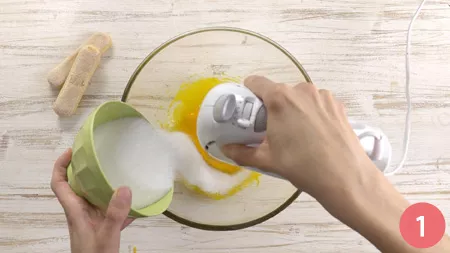
The coffee must be strong and completely cooled
💡 Pastry Chef's Tip: The coffee must be at room temperature. If it's too hot, the ladyfingers will fall apart and the cream will liquify.
Carefully separate the yolks from the whites using two different bowls. Combine the yolks with 50g of sugar and whisk with an electric mixer for at least 10 minutes until you obtain a light, fluffy and foamy mixture. The cream should triple in volume and form a 'ribbon' when you lift the beaters.
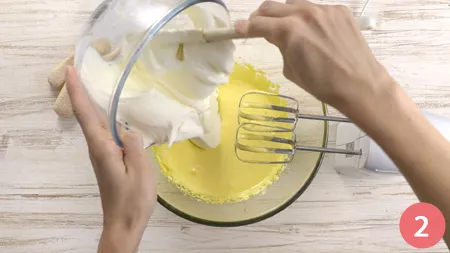
The whisked yolks should be light and foamy
💡 Professional Technique: The eggs must be at room temperature. Whisk the yolks until, when lifting the beaters, the mixture falls in a ribbon that remains on the surface for several seconds.
To pasteurise the eggs, make a syrup by bringing the remaining 50g of sugar with 2 tablespoons of water to 121°C. Use a kitchen thermometer to check the temperature. Pour the hot syrup in a thin stream over the whisked yolks, continuing to whisk for another 5 minutes until completely cooled.
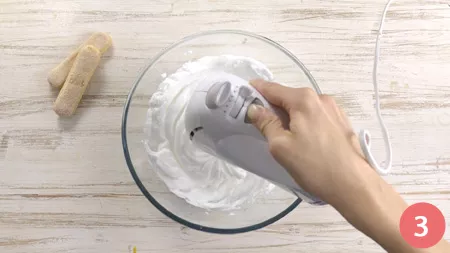
Pour the syrup in a stream whilst continuously whisking
💡 Food Safety: Pasteurisation eliminates any bacteria whilst maintaining creaminess. Temperatures: yolks at 60°C, whites at 70°C. This step is essential for food safety.
The mascarpone must have been at room temperature for at least 30 minutes. Work it gently with a spatula to soften it, without whipping. Gradually incorporate the pasteurised yolks with movements from bottom to top. The cream must be smooth, glossy and without lumps. Don't use electric beaters at this stage to avoid breaking down the cream.
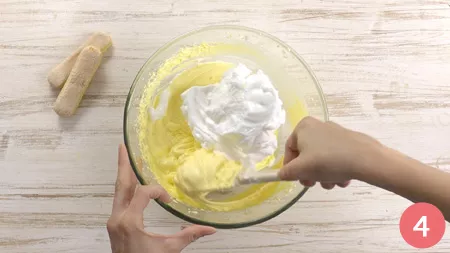
The cream must be smooth and homogeneous
💡 Consistency Secret: Work the mascarpone minimally. Too much working makes it runny. Incorporate the yolks with gentle movements from bottom to top.
Whisk the whites to stiff peaks with a pinch of salt or a few drops of lemon. The whites are ready when, turning the bowl upside down, they don't move. Fold the whipped whites into the mascarpone cream in three portions, stirring gently from bottom to top with a spatula to avoid deflating them.
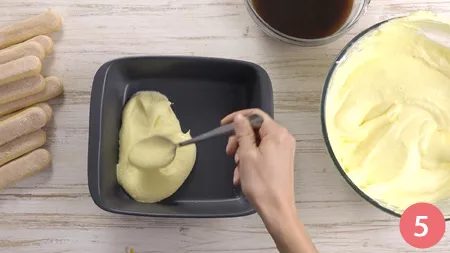
Well-beaten whites guarantee lightness
💡 Trick for Lightness: The whites must be whipped to very stiff peaks. Fold them in gently to maintain the incorporated air that will give lightness to the cream.
Quickly dip the ladyfingers in the coffee (1-2 seconds per side) and arrange them on the bottom of a 30x20cm dish. The biscuits should be moist but not sodden. Create an even layer without gaps. Spread half of the mascarpone cream levelling with a spatula. Dust lightly with sifted cocoa powder.
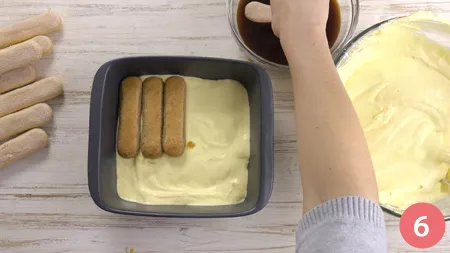
The ladyfingers must be arranged neatly
💡 Professional Technique: Dip only the base of the ladyfinger in the coffee. The top will absorb moisture from the cream. This prevents the tiramisu from becoming too wet.
Repeat the process with a second layer of dipped ladyfingers and the remaining cream. Level the surface perfectly with an offset spatula. The surface must be completely smooth for an impeccable presentation. Cover with cling film directly on the surface to prevent a skin forming.

The surface must be perfectly smooth
💡 For a Perfect Presentation: Use an offset spatula to level. Tap the dish gently to eliminate air bubbles and compact the layers.
Place in the refrigerator for at least 4 hours, preferably overnight. During the chilling time, the flavours meld and the consistency becomes perfect. Before serving, dust generously with sifted cocoa powder using a fine sieve. For a gourmet touch, add dark chocolate shavings made with a vegetable peeler and fresh mint leaves.

The tiramisu ready to serve
💡 Time is Crucial: 4 hours is the minimum, but after 12-24 hours the tiramisu reaches its peak of taste and consistency. Maturation is essential.








